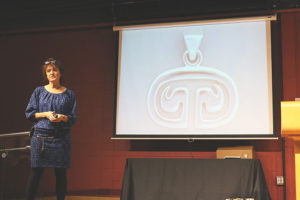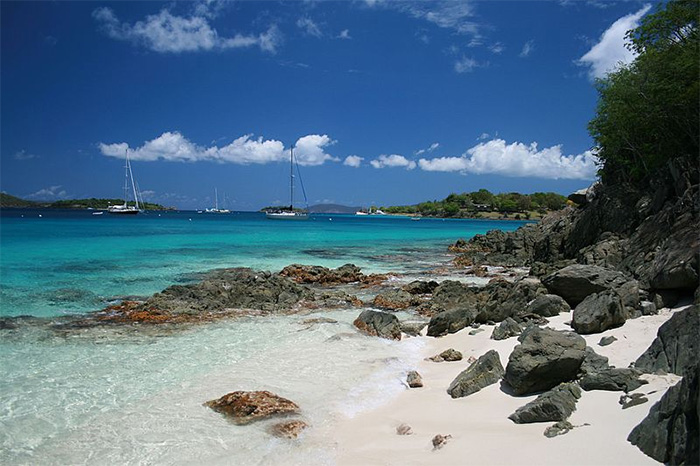The St. John U.S. Virgin Island is a beautiful, affordable location full of rich history for students to explore and appreciate according to Kathy Rowell, Ph.D., Professor of Sociology at Sinclair.
Rowell presented a Sinclair Talks event on the island as part of the International Series.
The island was discovered by Christopher Columbus in 1493, but was not settled until 1718 by the Danish.
The Danish built massive sugar cane plantations and operated them mainly through slave labor.
“The plantations were so big, and so many slaves had to be brought in to maintain them that slaves outnumbered the Danish living there by a 5:1 ratio,” Rowell said.
The island was also the site of one of the first major slave rebellions, which led to much bloodshed on both sides.
During World War I, the United States bought the Virgin Islands from the Danish government for $25 million, and Denmark was given Greenland in the exchange.
“I believe that we need to learn and understand the history of the island, because as tourists we sometimes take the beautiful beaches and locations for granted,” Rowell said.

The island has 19 square miles of land, and national parks make up 60 percent of it. There are only roughly 4,170 residents there.
There are 22 trails on the island that show a wide variety of landmarks and unique sights, including petroglyphs made by the native people who lived there.
A broad variety of animals live on the island, from donkeys brought there from Denmark to sea turtles, stingrays, sharks, octopi and many exotic birds.
Another unique feature of the island is the absence of big corporations and very minimal commercialization taking place there.
“You won’t find a Starbucks, McDonalds or a Marriott hotel there,” Rowell said. “All the shops there are owned indecently by the locals, and all of their goods are made locally and are artisan.”
Tourists can only travel the island by Jeeps that are sold to them by independent dealers who were born there.
This is because most of the people there practice and support eco-tourism, which is the practice of keeping the land in the same condition that it was in.
This was pioneered by Stanley Selengut, who turned the national park Maho Bay into one of the most eco-friendly resorts in the world. It was bought and became a private estate in 2013.
These ideals are not lost however, as many of the eco-tents and other areas available to stay in have environmentally friendly features like compost toilets, run on solar power and use rainwater for showers.
“The goal is to make tourism not so elitist, while being fair to the people who live there year round,” Rowell said.
There are still problems that face inhabitants of the island. A rising sea level and higher temperatures from climate change, along with water shortages and droughts in the hot months are just a few.
Island natives also can struggle financially, and although they are U.S. citizens who pay taxes, they do not have statehood and so they cannot vote in presidential elections.
Rowell encourages students to go to the island, but to be respectful of its history and citizens, as well as the animal life and vegetation.
“I think it’s a great location for college students because you don’t need a passport, it’s affordable and there is so much history there and so many beautiful places to explore,” Rowell said.
Henry Wolski
Reporter
